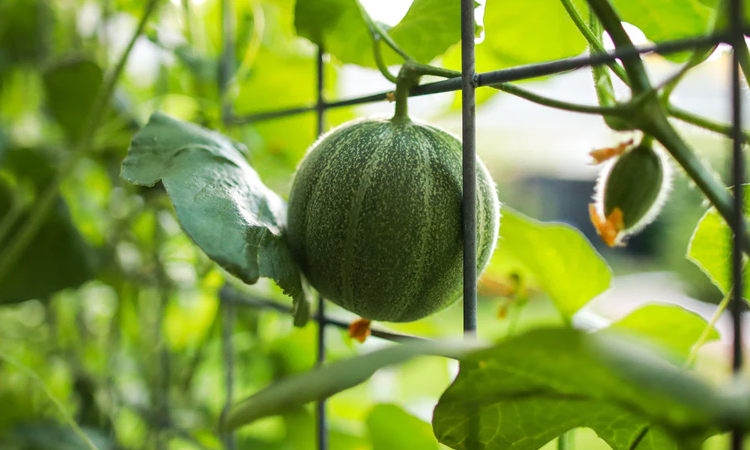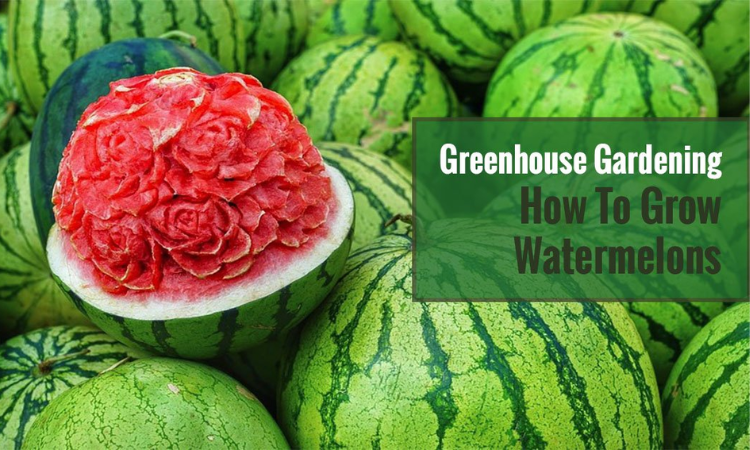How to Grow Melons in a Greenhouse?: Hello, fellow green thumbs! You’re in for a treat if you’ve ever longed to harvest luscious, sun-kissed melons right from your own greenhouse. This tutorial will take us on an interesting adventure with a tasty reward: learning how to cultivate melons in a greenhouse. So, get your hands dirty and help me turn that dream into something edible.
How to Grow Melons in a Greenhouse?
Delicious Options for Greenhouse Cultivation
Choosing the right melons to grow in a greenhouse is the first step to success. Pick compact, bushy varieties such as cantaloupe or honeydew that thrive in containers. These varieties are not only hardy in the greenhouse, but they also have a superb flavor.
Adapted to Fit Your Specific Needs
Consider your personal tastes in sweetness and texture while selecting melon varieties. Whether you like the subtle sweetness of watermelon or the tropical richness of muskmelon, there is a greenhouse-friendly melon variety that suit your taste. It’s like making your own little paradise out of melons!
Establishing the Ideal Environment for a Greenhouse
The Cold Is Biting
Since melons thrive in the heat and light of the sun, your greenhouse needs to be just right for them to grow. Expect highs of 75–85 degrees Fahrenheit (24–29 degrees Celsius) throughout the day and slightly lower lows after dark. Melons do best in an artificial climate that simulates their ideal natural conditions.
Light-Based Techniques
Make sure your greenhouse is a sunny haven if you plan on growing melons there. Make sure your greenhouse gets plenty of natural light as you set it up, and consider supplementary lighting for cloudy days. It’s like giving your melons front-row seats to their favorite sunny performance.
Methods for Precisely Sowing Melon Seeds
Soil Preparation and Selection
Selecting a site with good drainage and plenty of nutrients can help your melons flourish. Add organic matter, such as compost, for a boost. Growing melons is a lot like feeding a picky eater, so taking the time to prepare a nice bed for them is essential.
Planting Density and Interval
Put at least 36 inches (91 cm) of space between your melon plants so the vines have opportunity to grow. It is vital to put seeds at a depth of roughly 1 inch (2.5 cm). This ensures that each melon has sufficient space to develop normally inside a greenhouse.
Providing Wisdom to Fertile Melons
Effective Water Mysticism
Water the soil consistently, but don’t let it get too soggy, as melons need a steady supply of moisture. Fungi can be prevented by watering the plant’s roots. Just like you would enjoy a refreshing drink on a hot day, your melons will love a treat of juicy, sweet fruits.
Consonance with Moisture
Melons thrive in the humid, tropical environment created by greenhouses. Monitoring humidity levels and ensuring sufficient ventilation can help prevent illness. Think of your melons as the starting point for a spa-like retreat, replete with a perfect humidity sauna.
Assistance with Melon Plants and Their Care
The Art of Vine-Control
Even though melon vines tend to be a bit unruly at first, they can be trained to behave. To direct the vines and keep them from becoming a tangled mess, use delicate knots. It’s like training your melons to dance with elegance and precision.
Approving of the Heavy Fruits
As your melons grow larger, the vines may need extra support to prevent them from breaking under the weight of the fruit. Slinging melons in mesh hammocks or using other supporting structures guarantees a safe and dependable harvest. It’s the equivalent of giving your melons a plush hammock to unwind in.
Bringing a Melon to Fruition
Fertilization Through Flavor
Regular applications of a balanced fertilizer may do wonders for your melons, enhancing their flavor and promoting robust development. Greenery flourishes when there’s an abundance of nitrogen, but the fruits aren’t as appetizing. Find a middle ground that benefits both the taste receptors in your melons and the vines.
Pollination Advice
When it comes to pollination, melons need a little help. Use a small brush or encourage bees to transport pollen from one flower to another. Imagine it as your melons’ matchmaker, making sure that both sides enjoy a healthy relationship and a sweet harvest.

Benefiting from Your Efforts
When to Taste?
For optimal sweetness, melons should be picked at just the right time. Look for a subtle softening at the blossom end, a change in skin color, and a pleasant aroma. Different categories warrant different symbols. It’s like saving up for the perfect moment to eat a wonderfully ripe piece of fruit.
Having a blast while slicing
When your melons give you the thumbs up, it’s time to sit back, relax, and enjoy the fruits of your effort. Remove the melon from the vine by slicing around it, stopping just short of the stem. Gather your nearest and dearest to rejoice in your successful harvest from the greenhouse.
Maintaining Success with Greenhouses for Upcoming Harvests
Preserving Seeds for the Upcoming Season
Don’t throw away the seeds from your best-performing melons; use them to continue the story. Once a few fruits have ripened, you can harvest the seeds and dry them. Store them in a cool, dry place until you’re ready to plant. It’s like trying to preserve the legacy of your previous achievements.
Educating Yourself with Each Harvest
Growing melons is like a mini-course in greenhouse gardening. Take into account both the items that worked well and those that could be improved. Changing the temperature or trying out other varieties could be an option. Melons are like recipes; the more you make them, the better you get at making them with each harvest.
Melon Haven, Your Greenhouse Is on Display
Putting Out the Call for Help
To celebrate your success in cultivating melons in a greenhouse, you should distribute some of your produce to your friends and neighbors. A fresh, cultivated melon is an exceedingly attractive gift that conveys your recipient’s appreciation for gardening. It’s equivalent to sending out a tasting invitation to sample the finest your greenhouse has to offer.
Getting Other Gardeners Motivated
Make your greenhouse a place where other gardeners can visit for inspiration. Put up your thoughts, suggestions, and photos on gardening blogs and social media. After reading about your success, others may be interested in and motivated to start their own greenhouse melon gardens.
Outpacing Even the Rapid Expansion of Cultivated Melons
Looking at More Precious Greenhouse Objects
Why not branch out from greenhouse melon cultivation once you’ve mastered the art? Have fun with other kinds of food that thrive in a greenhouse. Your greenhouse can be a safe haven for many delicious veggies all through the year.
Inquiry Perpetual in Pursuit of Progress
The beauty of greenhouse gardening lies in the fact that it is constantly evolving. Have an insatiable passion for growth, whether it’s from trying out new cultivars, experimenting with various methods, or just taking joy in the surprises that occur with every season. Your greenhouse garden can constantly synchronize with your expanding gardening expertise, much like a dynamic melody.
To sum up:
Congratulations! You’ve built a lovely greenhouse, perfect for growing juicy melons. You’ve gone on an adventure that’s transformed your greenhouse from a place of promise into a place of delicious reward. Never forget that the story of your greenhouse is one of ever-evolving flavor as you work to preserve seeds, spread joy, and inspire other gardeners. I pray that the next many years bring continued prosperity to your greenhouse haven. Have fun growing!
I hope you like the part where we talked about How to Grow Melons in a Greenhouse. For more content like this, visit our website VariegatedPlantz.com.

